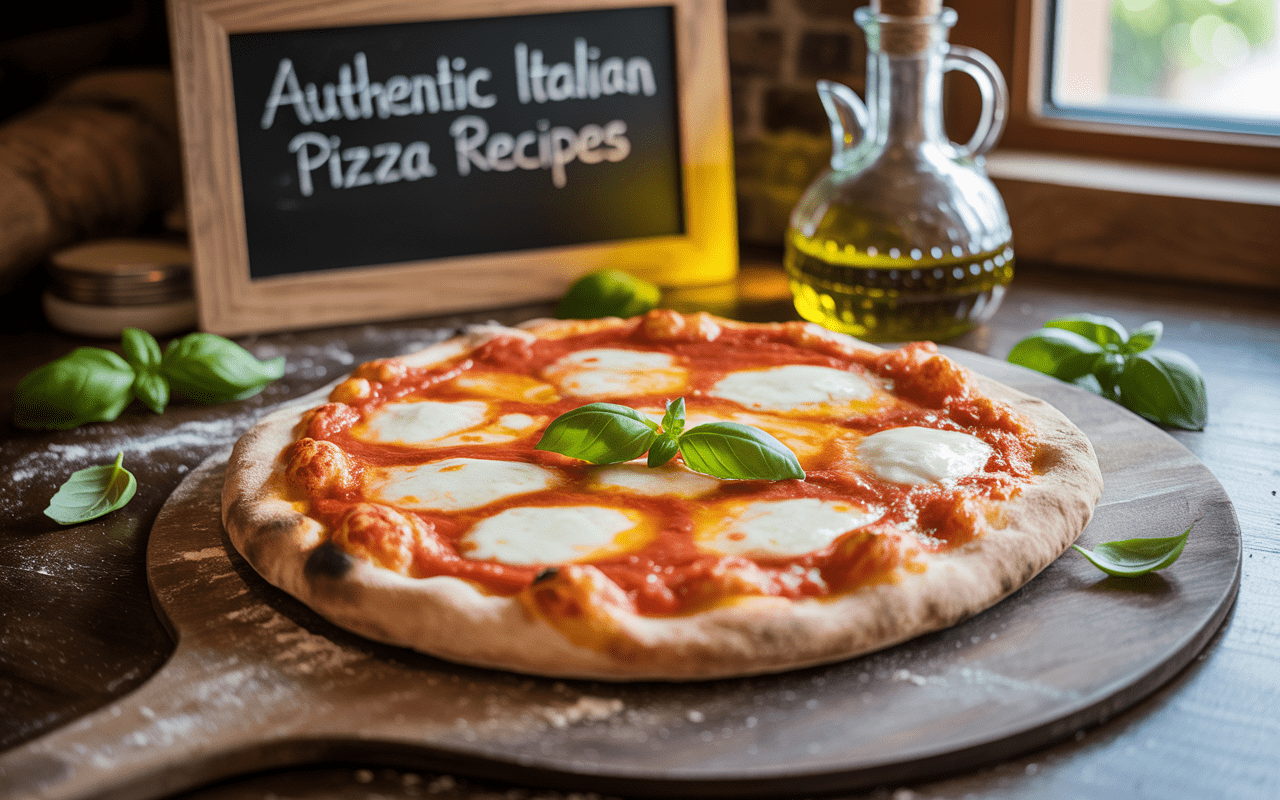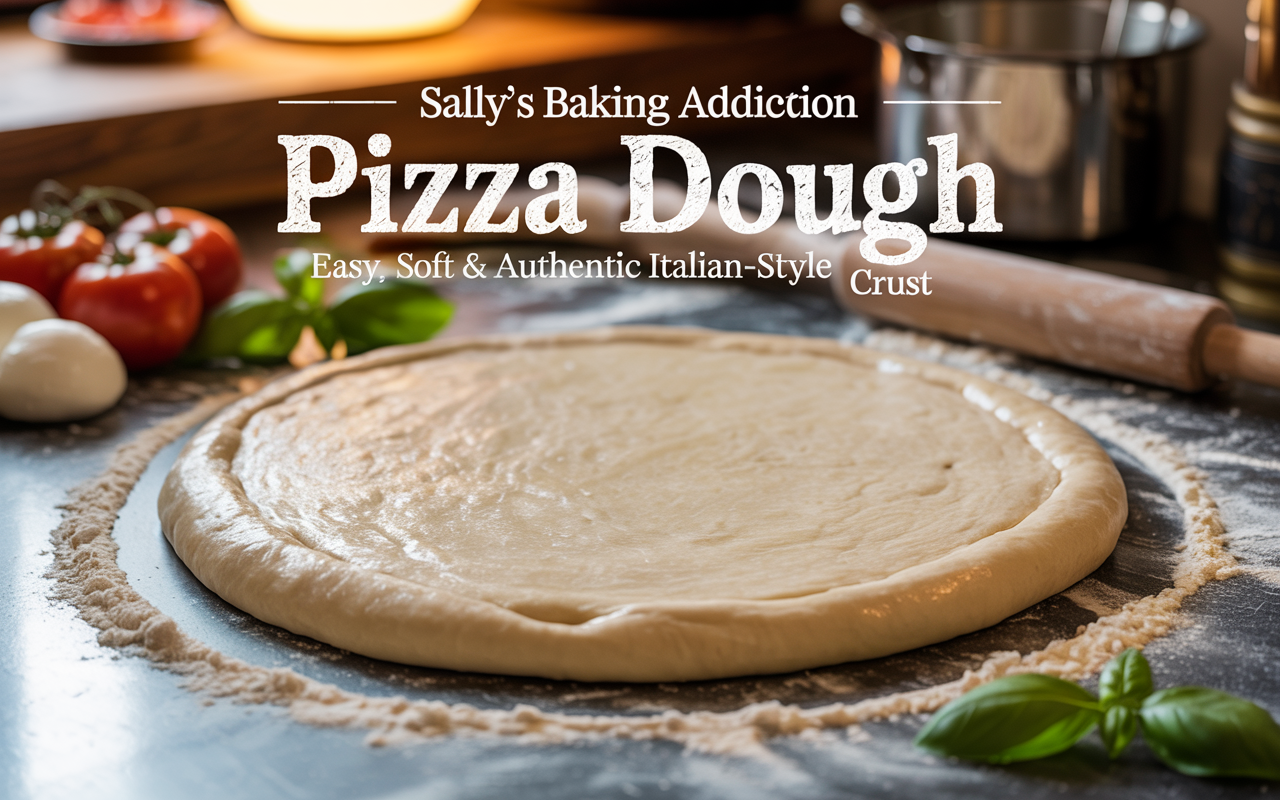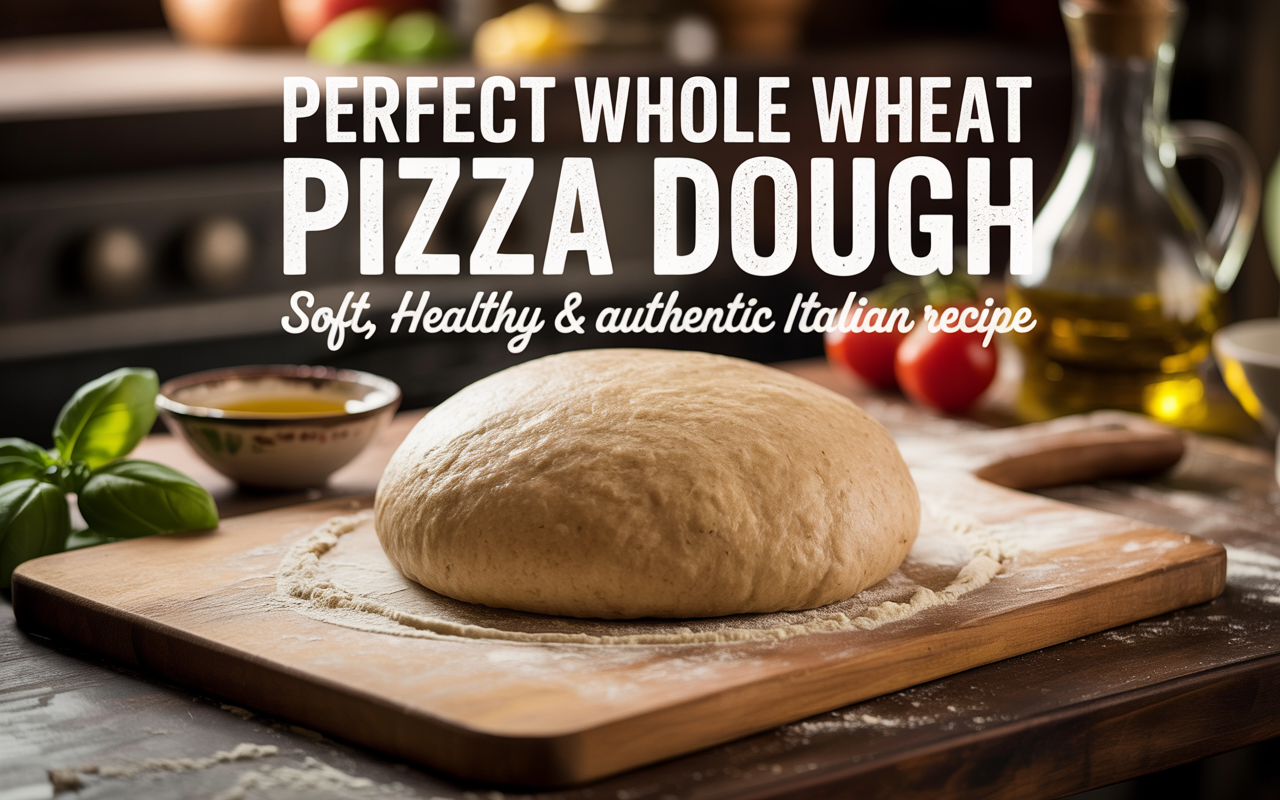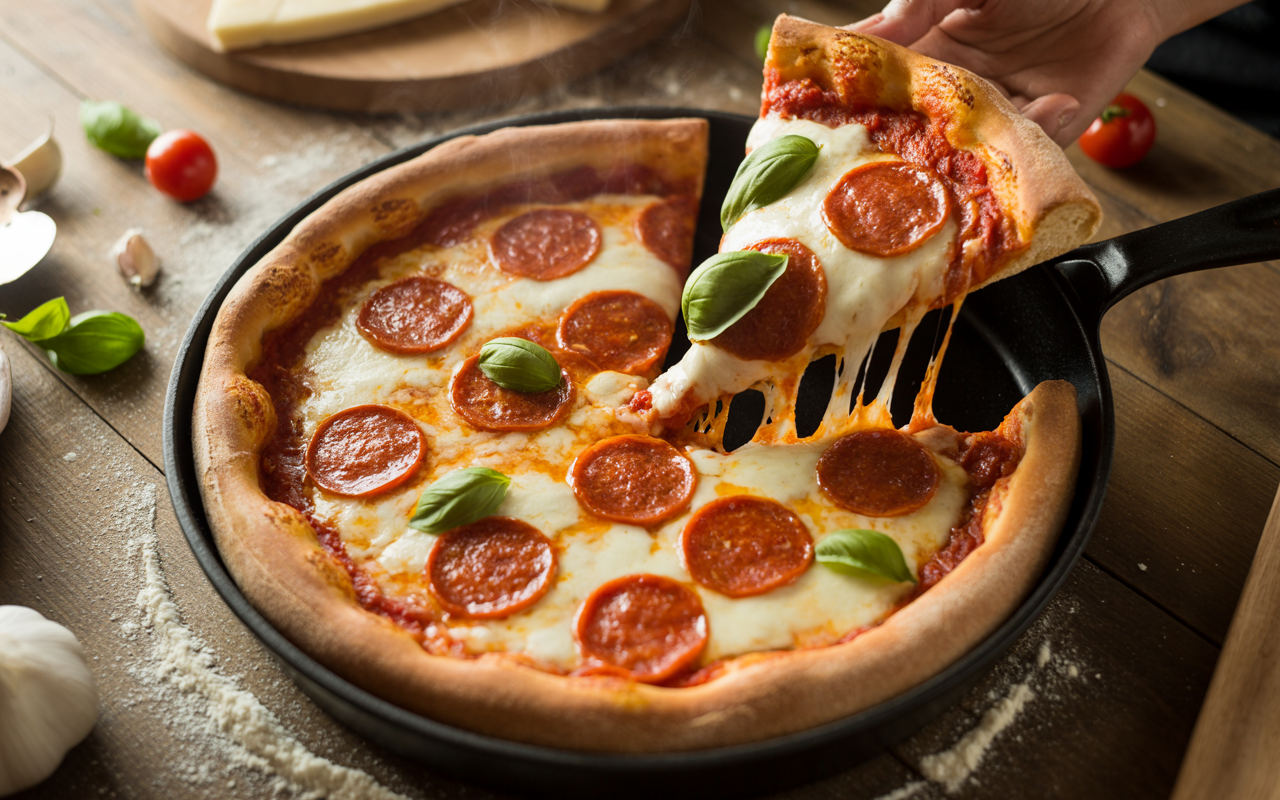🍕 Authentic Italian Pizza Recipes – From My Kitchen in Italy to Yours!
There’s something truly magical about Italian pizza — that crisp yet tender crust, the tang of ripe tomatoes, and the aroma of bubbling cheese fresh out of a wood-fired oven. As someone who grew up with the scent of yeast and olive oil wafting through my kitchen, I can tell you this: real Italian pizza is not just food, it’s an emotion.
Forget frozen pizza or over-topped American versions. Today, I’m sharing my most loved Italian pizza recipes, perfected over years of experimenting, tasting, and learning from Italian nonnas (grandmothers) who know the art better than anyone. Whether you’re craving a classic Margherita, a Neapolitan-style pizza, or a rustic vegetarian Italian pizza, this guide has everything you need — from dough to toppings.
Let’s start from the heart of it all — the dough.
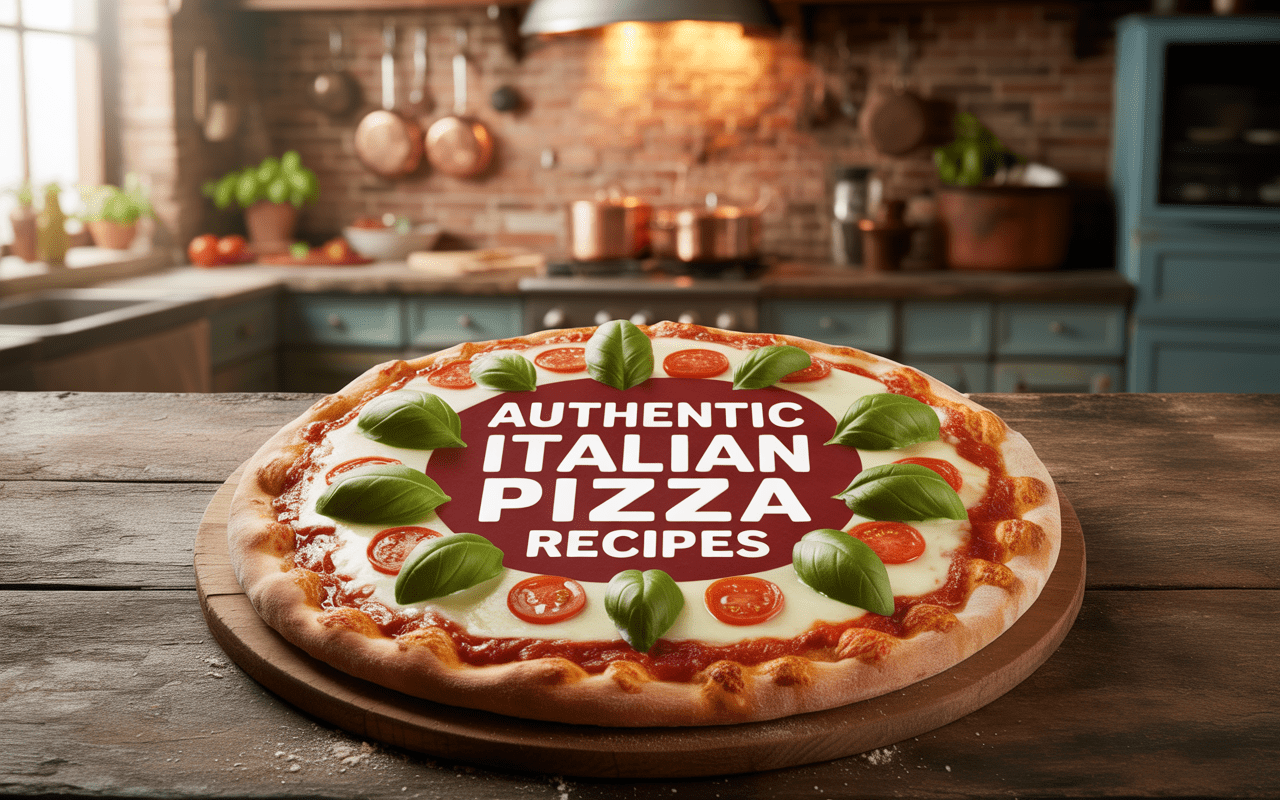
🧂 The Perfect Italian Pizza Dough (Base of Every Great Pizza)
Before you think about sauce, cheese, or toppings, remember — the dough is the soul of your pizza. It needs to be airy, chewy, and slightly crispy around the edges.
Ingredients for Authentic Italian Pizza Dough
| Ingredient | Quantity |
|---|---|
| All-purpose flour (00 flour if possible) | 3 ½ cups (450 g) |
| Warm water | 1 cup (240 ml) |
| Active dry yeast | 1 ½ tsp |
| Olive oil (extra virgin) | 2 tbsp |
| Sugar | 1 tsp |
| Salt | 1 ½ tsp |
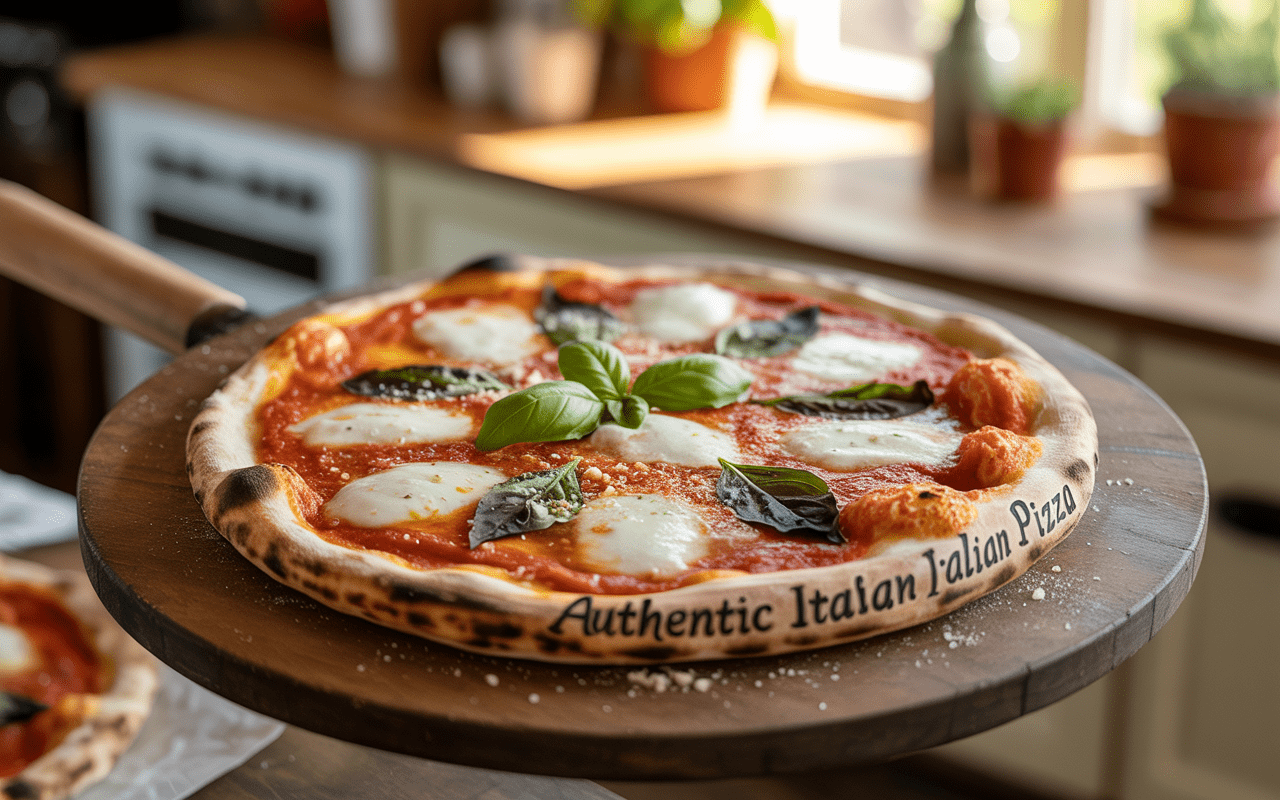
Step-by-Step Instructions for the Dough
- Activate the yeast:
In a small bowl, mix warm water (not hot!) with sugar and yeast. Let it rest for 10 minutes until foamy. - Mix the dough:
In a large bowl, combine flour and salt. Slowly pour in the yeast mixture while stirring with a wooden spoon. Add olive oil and start kneading. - Knead to perfection:
Move the dough to a floured surface and knead for about 10 minutes until it becomes smooth and elastic. The texture should feel like soft skin. - Let it rise:
Lightly oil a bowl, place your dough in it, and cover with a damp towel. Leave it to rise for at least 1 hour — or overnight in the fridge for that deep, authentic flavor. - Ready to roll:
Once doubled in size, punch down the dough gently and divide it into portions (depending on how many pizzas you want). Roll each into a thin circle.
Now that your dough is ready, we move on to what makes pizza irresistible — the sauce and toppings!
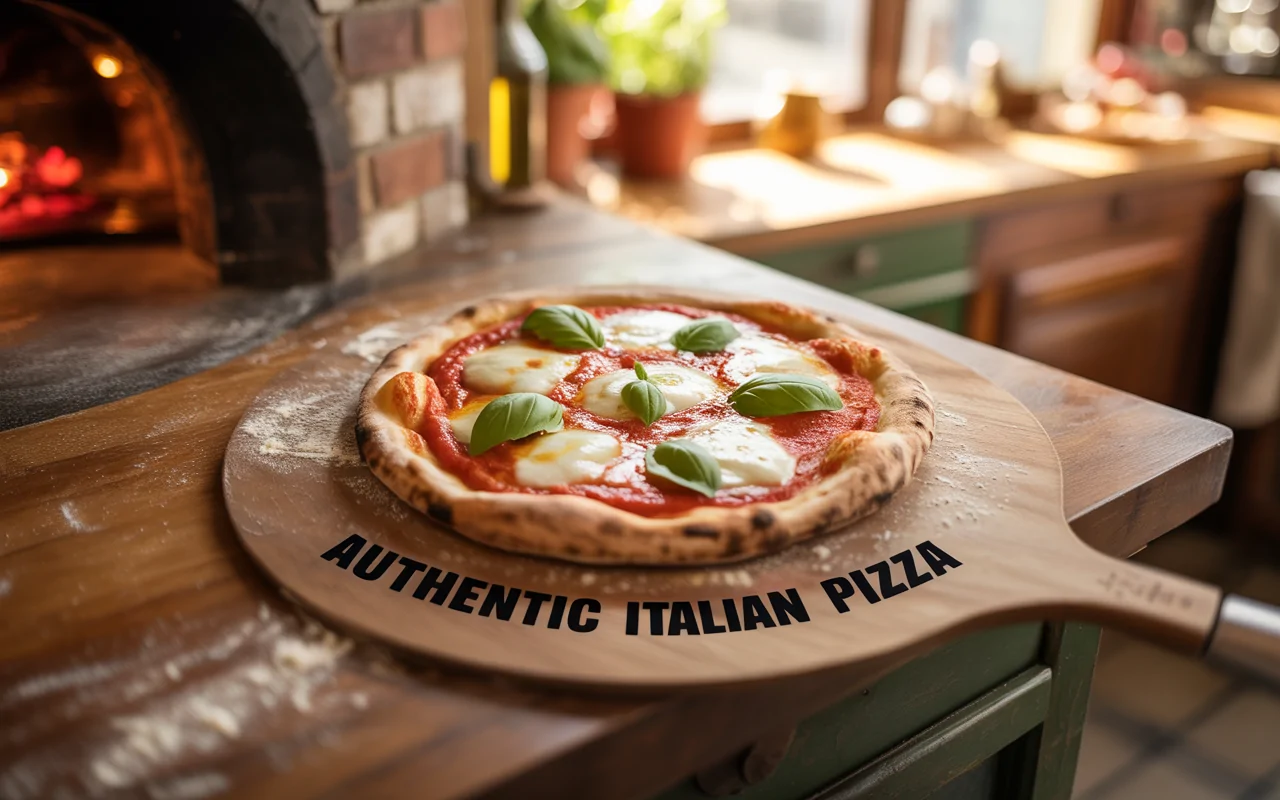
🍅 Homemade Italian Pizza Sauce Recipe
Forget store-bought sauce — Italian pizza sauce should be fresh, bright, and simple. Here’s my secret blend:
| Ingredient | Quantity |
|---|---|
| San Marzano tomatoes (or any ripe plum tomatoes) | 2 cups (about 400 g) |
| Garlic cloves | 2 |
| Olive oil | 2 tbsp |
| Dried oregano | 1 tsp |
| Fresh basil leaves | 5–6 |
| Salt & pepper | To taste |
How to Make It
- Heat olive oil in a pan and sauté garlic until fragrant.
- Add crushed tomatoes, oregano, and a pinch of salt and pepper.
- Simmer for 15 minutes on low flame until slightly thickened.
- Stir in fresh basil right before using.
That’s it — no sugar, no heavy seasoning. Just pure, authentic Italian flavor.
🍕 1. Classic Margherita Pizza Recipe
When in doubt, go classic! The Margherita pizza is Italy’s pride — a tribute to simplicity and balance. Tomato, mozzarella, basil — the Italian flag on a crust.
Ingredients
- 1 prepared pizza dough
- ½ cup homemade tomato sauce
- 1 cup mozzarella (preferably fresh buffalo mozzarella)
- 6–7 fresh basil leaves
- 1 tbsp extra virgin olive oil
Instructions
- Preheat your oven to 250°C (480°F) — or as hot as it gets. A pizza stone makes all the difference if you have one.
- Roll your dough thin and spread the tomato sauce evenly.
- Add chunks of mozzarella and sprinkle with olive oil.
- Bake for 7–9 minutes until the crust blisters and cheese bubbles.
- Remove from the oven and top with fresh basil.
The result? Crispy edges, creamy cheese, and that unmistakable aroma of real Italian Margherita pizza.
🍄 2. Rustic Veggie Italian Pizza
If you love vegetables as much as I do, this recipe is pure joy. Loaded with colorful veggies, melted cheese, and herbs — it’s Italy’s countryside on a plate.
Ingredients
| Ingredient | Quantity |
|---|---|
| Pizza dough | 1 base |
| Tomato sauce | ½ cup |
| Mozzarella cheese | 1 cup |
| Sliced bell peppers | ½ cup |
| Black olives | ¼ cup |
| Mushrooms | ¼ cup |
| Red onion | ¼ cup |
| Olive oil | 1 tbsp |
| Italian seasoning | 1 tsp |
Instructions
- Spread the sauce on your pizza base.
- Add a layer of mozzarella cheese.
- Top with sliced veggies and drizzle with olive oil.
- Sprinkle Italian seasoning for that herby kick.
- Bake for 8–10 minutes until veggies are tender and the crust is golden.
This pizza pairs beautifully with a chilled glass of white wine or a simple green salad.
🍖 3. Neapolitan Pizza (Napoli-Style)
This one’s special — thin crust, puffy edges, minimal toppings. The Neapolitan pizza was born in Naples and remains one of the world’s most loved styles.
You’ll Need:
- 1 dough ball (thinly rolled)
- ½ cup tomato sauce
- 100 g fresh mozzarella di bufala
- A drizzle of olive oil
- A few basil leaves
Tip: Neapolitan pizza is all about fast baking at high heat. Traditional pizzerias use a wood-fired oven, but at home, you can mimic it with a pizza stone or cast iron pan.
Bake at 500°F (260°C) for 6–7 minutes until you see those lovely leopard-like char spots on the crust.
🍽️ Pro Pizza Tips from My Italian Kitchen
Over years of making and eating (a lot of!) pizza, I’ve gathered these tried-and-tested secrets:
- Use “00” flour – It’s superfine and makes your crust soft yet crisp.
- Let your dough rest overnight – Fermentation gives a rich, complex flavor.
- Don’t overload toppings – Less is more in Italian cooking.
- Preheat your oven fully – Hotter = better texture.
- Brush the crust with olive oil before baking for extra crunch and shine.
- Always use fresh mozzarella – Never shredded packaged cheese.
- Bake on a pizza stone – It mimics the authentic brick oven texture.
🧑🍳 Variations to Try (Because Pizza Should Never Be Boring)
- Four Cheese Pizza (Quattro Formaggi): Blend mozzarella, gorgonzola, fontina, and parmesan. Rich, gooey, and irresistible.
- Pizza Bianca: No tomato sauce — just olive oil, garlic, and cheese. Elegant and simple.
- Prosciutto e Rucola: Topped with thin prosciutto slices and fresh arugula after baking. A perfect balance of salty and fresh.
- Seafood Pizza: Fresh shrimp, mussels, and calamari with a light tomato base — coastal Italy on your plate.
💡 FAQs – Everything You Want to Know About Italian Pizza
Q1. What makes Italian pizza different from American pizza?
Italian pizza is lighter, uses fewer toppings, and focuses on fresh, high-quality ingredients. The crust is thin, not overloaded, and baked at high temperatures for a short time.
Q2. Can I make Italian pizza without a pizza stone?
Yes! Use a heavy cast iron skillet or a preheated baking tray to mimic the stone’s heat retention.
Q3. Which cheese is best for Italian pizza?
Always go for fresh mozzarella or buffalo mozzarella. For extra flavor, add parmesan or pecorino.
Q4. What’s the best sauce for Italian pizza?
A simple blend of crushed San Marzano tomatoes, garlic, olive oil, and basil — that’s the authentic Italian way.
Q5. Can I freeze homemade pizza dough?
Absolutely. Divide it into balls, coat lightly with oil, wrap in plastic, and freeze. Thaw overnight in the fridge before use.
❤️ Final Thoughts – From My Oven to Yours
There’s something deeply satisfying about kneading dough, smelling tomatoes simmering on the stove, and watching that golden crust puff up in the oven.
Making Italian pizza at home isn’t complicated — it’s an act of love. Once you master the basics, you’ll never go back to takeout again.
So go ahead — gather your ingredients, roll up your sleeves, and let your kitchen smell like a pizzeria in Naples tonight.
And when that first bite of crispy, chewy, cheesy goodness melts in your mouth, you’ll know exactly why Italian pizza recipes are loved all over the world.
See Also: Instant Pizza Dough Recipe – Easy No Yeast Pizza Base in Minutes


